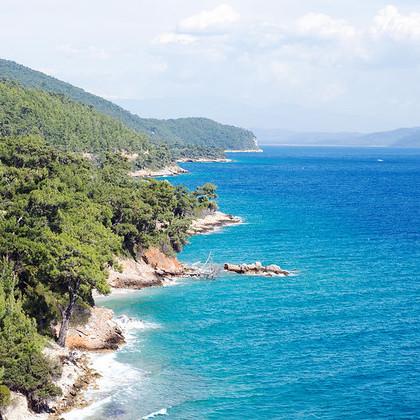 |
More progress needed on ocean protection, Oregon State scientists tell global conference |
CORVALLIS, Ore. – World governments and other leadership bodies are taking vital steps to protect the ocean but more progress is urgently needed, Oregon State University scientists reported today at the eighth Our Ocean Conference in Athens. |
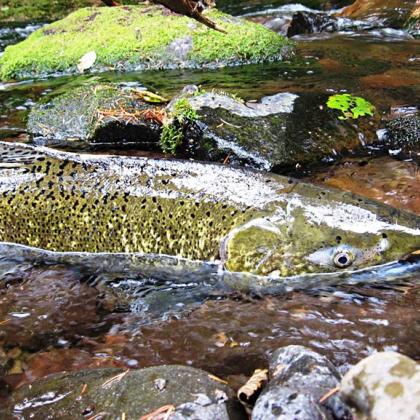 |
Reproductive success improves after a single generation in the wild for descendants of some hatchery-origin Chinook salmon |
Researchers who created “family trees” for nearly 10,000 fish found that first-generation, wild-born descendants of hatchery-origin Chinook salmon in an Oregon river show improved fitness. |
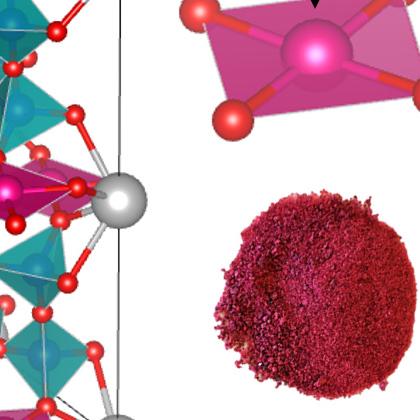 |
Oregon State researchers advance pigment chemistry with moon-inspired reddish magentas |
CORVALLIS, Oregon – An Oregon State University researcher who made color history in 2009 with a vivid blue pigment has developed durable, reddish magentas inspired by lunar mineralogy and ancient Egyptian chemistry. |
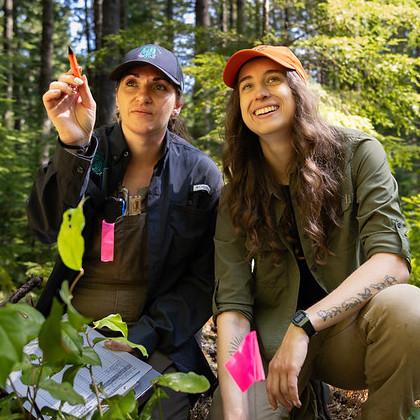 |
Indigenous Knowledge, western science braided into recommendations for land managers |
CORVALLIS, Ore. – Two Oregon State University faculty are among the lead authors of a report that combines Indigenous Knowledge and western science for the purpose of informing future climate-adapted land management decisions across the United States. |
 |
Oregon State dog-training program helps increase physical activity among kids with disabilities |
By engaging regularly with their family dog and teaching it a series of tricks and commands, children with developmental disabilities experienced a significant increase in their daily physical activity, a new study from Oregon State University researchers found. |
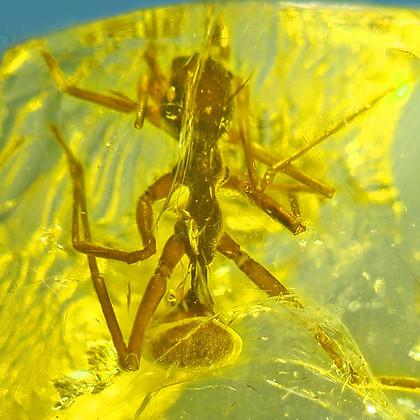 |
Research uncovers a rare resin fossil find: A spider that aspires to be an ant |
CORVALLIS, Ore. – Arachnophobia can make humans flee at the sight of a brown recluse, black widow or even a daddy long legs, but animal predators of spiders know no such fear. |
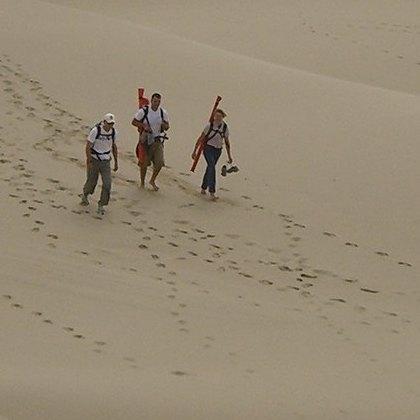 |
At Oregon State, shifting sands were a research focus long before ‘Dune’ movie craze |
CORVALLIS, Ore. – Three years after the release of “Dune,” a film adaptation of Frank Herbert’s epic 1965 sci-fi novel, “Dune: Part Two” is reigniting the public’s fascination with sandy environs and humanity’s efforts to reshape them. |
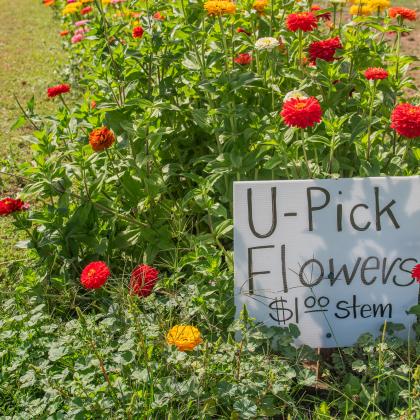 |
New OSU study values annual economic impact of Willamette Valley agritourism at nearly $1 billion |
Agritourism can take the form of farm-direct sales, education, entertainment, outdoor recreation and hospitality. |
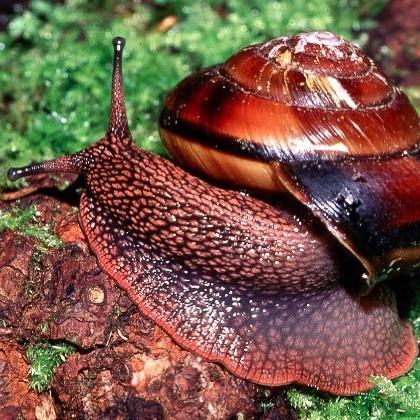 |
Product that kills agricultural pests also deadly to native Pacific Northwest snail |
CORVALLIS, Ore. – A product used to control pest slugs on farms in multiple countries is deadly to least one type of native woodland snail endemic to the Pacific Northwest, according to scientists who say more study is needed before the product gains approval in the United States. |
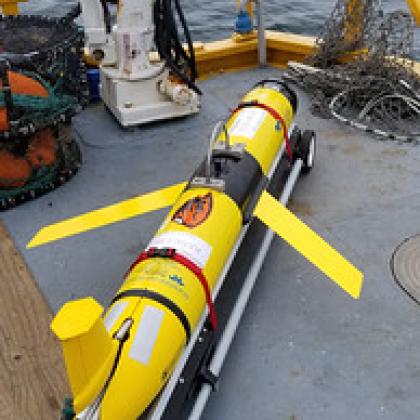 |
Hypoxia is widespread and increasing in the ocean off the Pacific Northwest coast |
Low oxygen conditions that pose a significant threat to marine life are widespread and increasing in coastal Pacific Northwest ocean waters as the climate warms, a new study shows. |
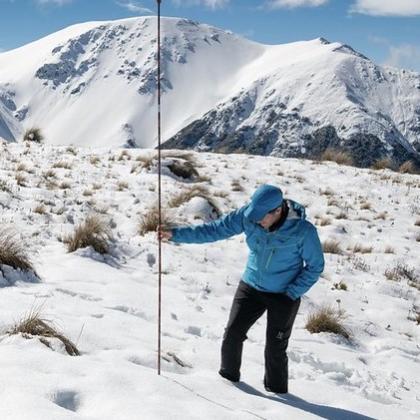 |
Oregon State researchers take deep dive into how much water is stored in snow |
CORVALLIS, Ore. – A heavy snowpack is fun for skiers and sledders, and it also acts like an open-air storage tank that melts away to provide water for drinking, irrigation and other purposes during dry months. |
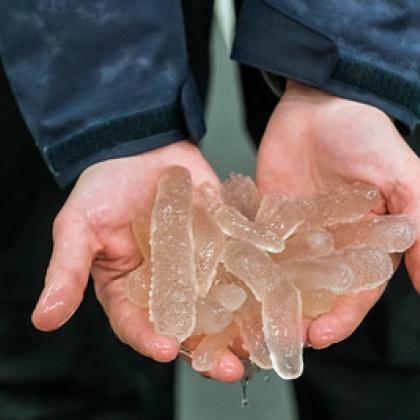 |
Marine heat waves disrupt the ocean food web in the northeast Pacific Ocean |
Marine heat waves in the northeast Pacific Ocean create ongoing and complex disruptions of the ocean food web that may benefit some species but threaten the future of many others, a new study has shown. |
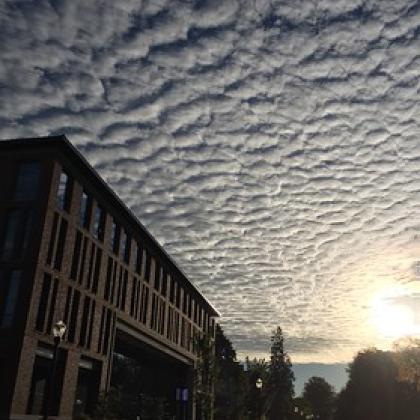 |
Gun manufacturers’ ads appeal to women as ‘serious students’ of firearms to boost sales |
Gun manufacturers are appealing to women as “serious students” of firearms in their advertising – a shift in strategy over the last two decades that may be contributing to increased gun sales, a new study shows.
|
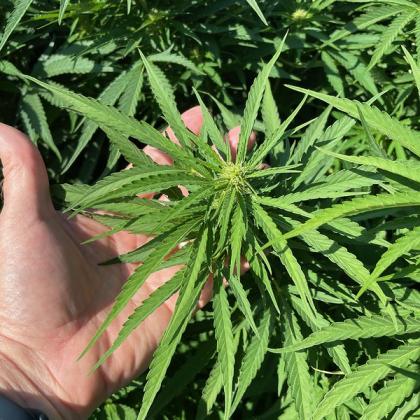 |
Oregon State receives $10 million grant to work with 13 Native American Tribes on hemp economic development |
Oregon State University’s Global Hemp Innovation Center has received a $10 million grant to work with 13 Native American Tribes to spur economic development in the western United States by developing manufacturing capabilities for materials and products made from hemp. |
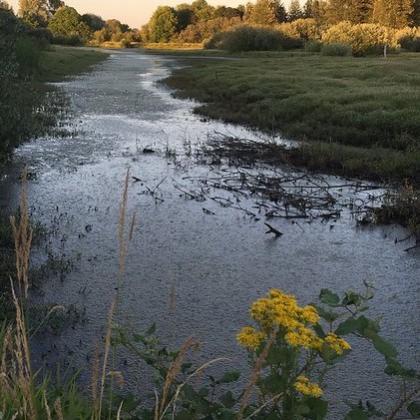 |
Oregon State researchers make key advance toward removing pesticide from groundwater |
Scientists led by an Oregon State University chemistry researcher are closing in on a new tool for tackling the global problem of weedkiller-tainted groundwater. |
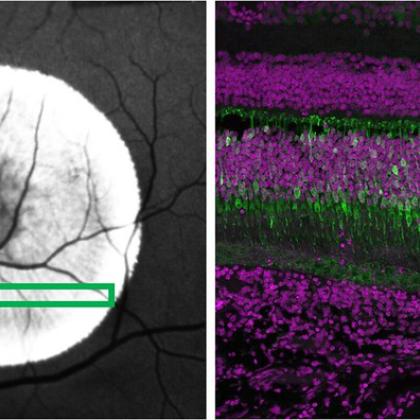 |
Researchers closing in on genetic treatments for hereditary lung disease, vision loss |
Researchers who work with tiny drug carriers known as lipid nanoparticles have developed a new type of material capable of reaching the lungs and the eyes, an important step toward genetic therapy for hereditary conditions like cystic fibrosis and inherited vision loss. |
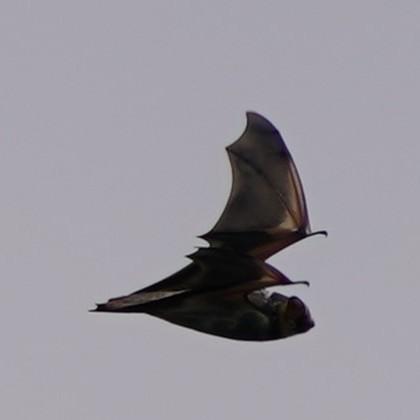 |
Oregon State University researchers are first to see at-risk bat flying over open ocean |
CORVALLIS, Ore. – On a research cruise focused on marine mammals and seabirds, Oregon State University scientists earned an unexpected bonus: The first-ever documented sighting of a hoary bat flying over the open ocean. |
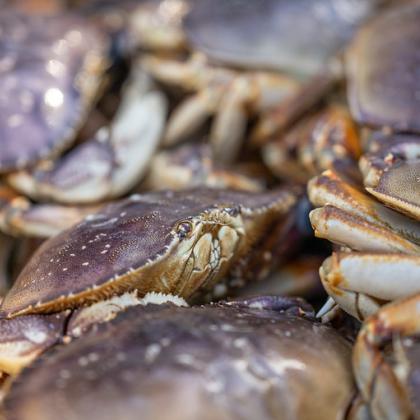 |
Oregon State leads effort to expand ocean oxygen monitoring sensor use in fishing industry |
Oregon State University researchers are leading an effort to refine the design and expand use of oxygen monitoring sensors that can be deployed in fishing pots to relay critical information on changing ocean conditions to the fishing industry. |
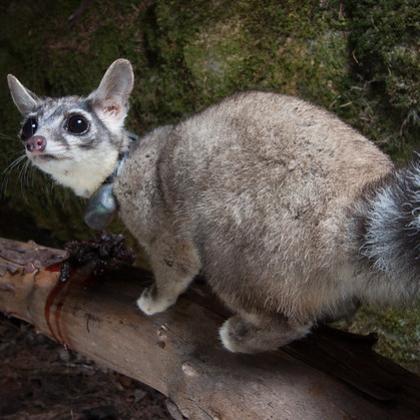 |
Study provides rare glimpse of the ringtail, an important but poorly understood predator |
CORVALLIS, Ore. – Secretive species can pose special conservation challenges simply because they are so skilled at staying under the radar that researchers have uncovered comparatively little about their basic needs. |
 |
Oregon State study sheds light on links between cognitive and motor skill development in children with autism |
A recent study by Oregon State University researchers highlighted the ways motor skills and cognitive skills develop in connection with each other in young children with autism, and found an opportunity for behavioral and physical therapists to work together to improve care. |
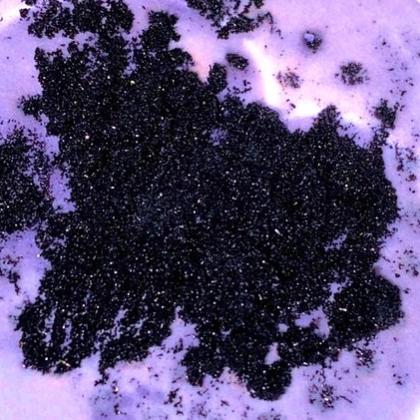 |
Oregon State University research makes key advance for capturing carbon from the air |
CORVALLIS, Ore. – A chemical element so visually striking that it was named for a goddess shows a “Goldilocks” level of reactivity – neither too much nor too little – that makes it a strong candidate as a carbon scrubbing tool. |
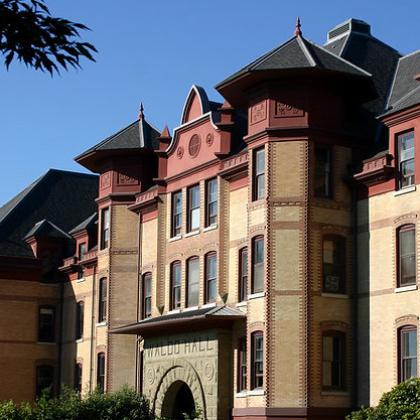 |
Whether cesarean or vaginal, childbirth experiences greatly affected by ‘dehumanizing’ treatment, OSU study finds |
Whether delivering via cesarean or vaginally, patients’ overall experiences and perceptions of childbirth are largely determined by the kind of treatment they receive from their medical providers and whether they feel seen and heard, a recent Oregon State University study found. |
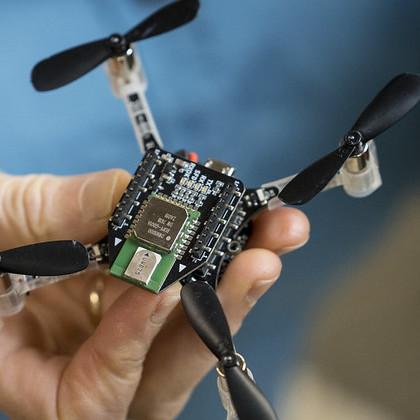 |
One person can supervise ‘swarm’ of 100 unmanned autonomous vehicles, OSU research shows |
CORVALLIS, Ore. – Research involving Oregon State University has shown that a “swarm” of more than 100 autonomous ground and aerial robots can be supervised by one person without subjecting the individual to an undue workload. |
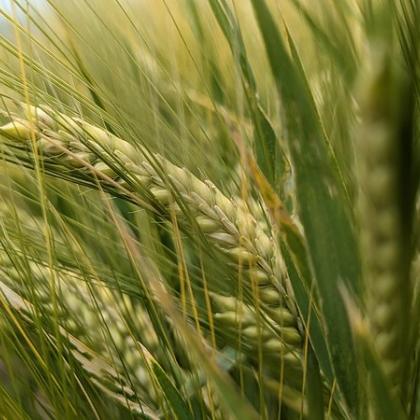 |
Oregon State receives $3.5 million grant to develop barley varieties for chefs, brewers, farmers |
Oregon State University will use a $3.5 million grant to lead a multi-state effort focused on developing new varieties of naked or hulless barley that appeal to chefs, brewers, distillers and farmers. |
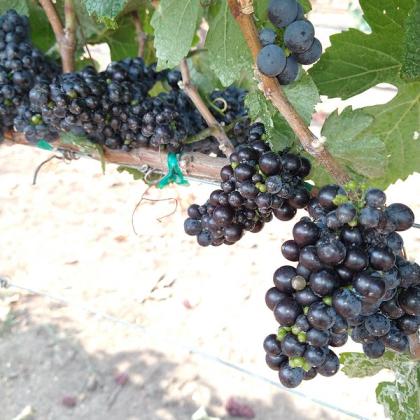 |
Spray coating for grapes shows promise in battle between wildfire smoke and wine |
Spray on coatings for grapes in the vineyard have promise in preventing off flavors in wines that result from contact with wildfire smoke, according to new Oregon State University research. |
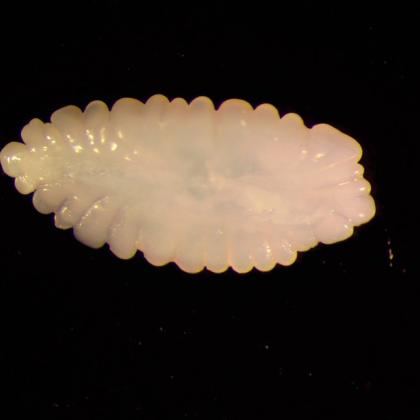 |
Marine heat waves trigger shift in hatch dates and early growth of Pacific cod |
Marine heat waves appear to trigger earlier reproduction, high mortality in early life stages and fewer surviving juvenile Pacific cod in the Gulf of Alaska, a new study from Oregon State University shows. |
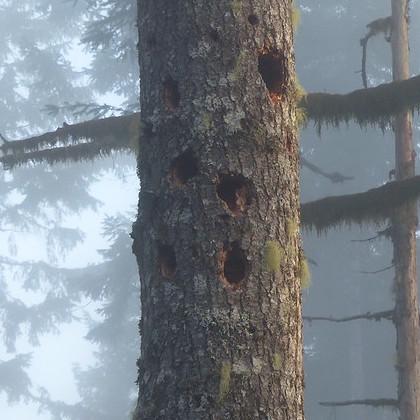 |
Study offers rare long-term analysis of techniques for creating standing dead trees for wildlife habitat |
CORVALLIS, Ore. – Ecologists have long known that standing dead trees, commonly referred to as snags, are an important habitat element for forest dwellers and act as a driver of biodiversity. |
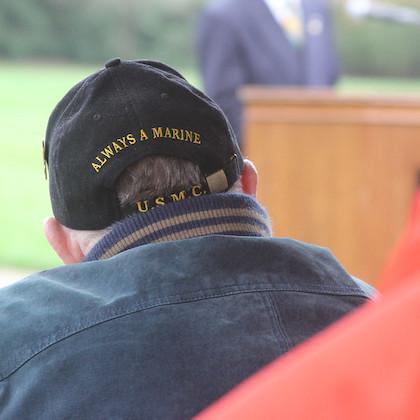 |
OSU study: Veterans’ PTSD symptoms affected by factors like service appraisal, social support |
Military veterans’ individual perceptions of their combat experiences and the social supports they receive when they return home are greater predictors of post-traumatic stress disorder symptoms than the specific conflict in which they served, a new Oregon State University study found. |
 |
Scientists outline a bold solution to climate change, biodiversity loss, social injustice |
CORVALLIS, Ore. – An international team of scientists led by Oregon State University researchers has used a novel 500-year dataset to frame a “restorative” pathway through which humanity can avoid the worst ecological and social outcomes of climate change. |
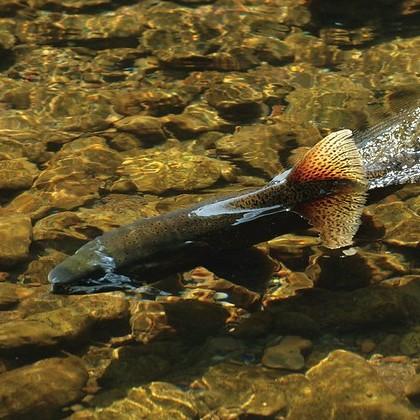 |
Vitamin discovered in rivers may offer hope for salmon suffering from thiamine deficiency disease |
CORVALLIS, Ore. – Oregon State University researchers have discovered vitamin B1 produced by microbes in rivers, findings that may offer hope for vitamin-deficient salmon populations. |
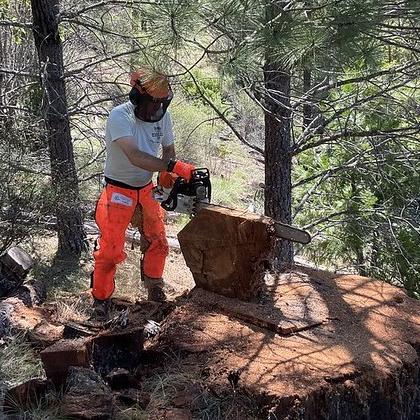 |
Western Cascades landscapes in Oregon historically burned more often than previously thought |
CORVALLIS, Ore. – Forests on the west slope of Oregon’s Cascade Range experienced fire much more often between 1500 and 1895 than had been previously thought, according to new research by scientists at Oregon State University. |
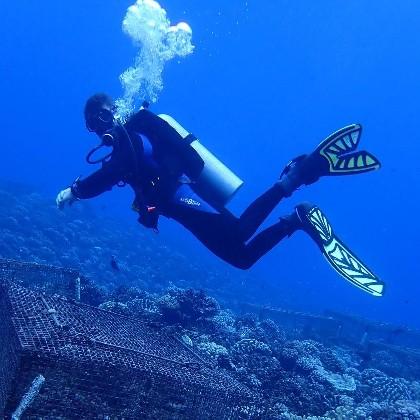 |
Some coral species might be more resilient to climate change than previously thought |
CORVALLIS, Ore. – Some coral species can be resilient to marine heat waves by “remembering” how they lived through previous ones, research by Oregon State University scientists suggests. |
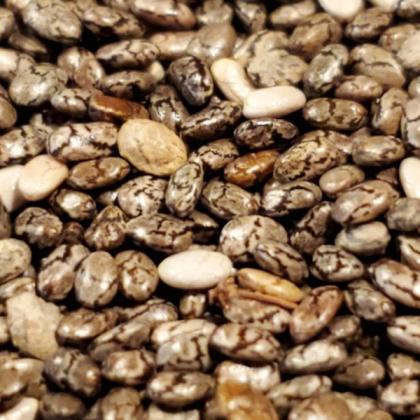 |
New study eyes nutrition-rich chia seed for potential to improve human health |
Oregon State University scientists have sequenced the chia genome and in doing so provided a blueprint for future research that capitalizes on the nutritional and human health benefits of the plant. |
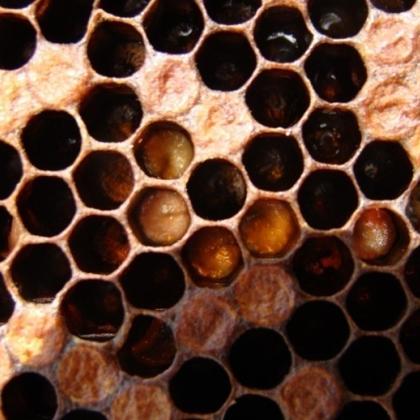 |
Oregon State researchers lead $4.2 million USDA grant to study disease plaguing honey bees |
Researchers at Oregon State University have received a $4.2 million grant from the U.S. Department of Agriculture’s National Institute of Food and Agriculture to study European foulbrood disease, which is killing honey bees and affecting pollination of specialty crops. |
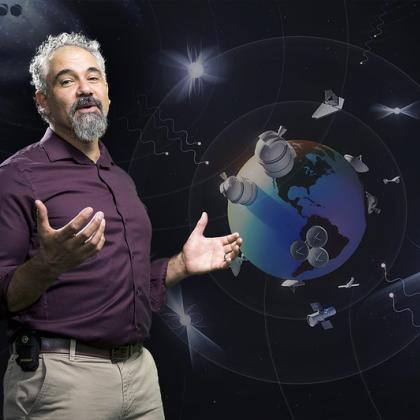 |
Gravitational waves discovery topic of Dec. 6 Oregon State Science Pub |
The discovery related to gravitational waves which made international headlines earlier this year and was predicted by Albert Einstein more than a century ago will be the topic of Oregon State University’s Science Pub on Dec. 6. |
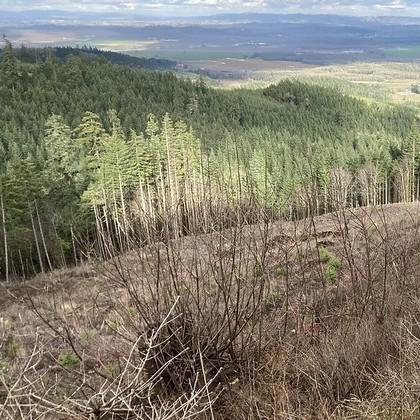 |
Forest modeling shows which harvest rotations lead to maximum carbon sequestration |
CORVALLIS, Ore. – Forest modeling by Oregon State University scientists shows that a site’s productivity – an indicator of how fast trees grow and how much biomass they accumulate – is the main factor that determines which time period between timber harvests allows for maximum above-ground carbon sequestration. |
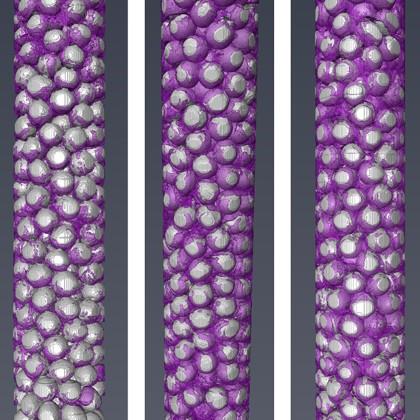 |
OSU, NASA partnership will send microbes to space to see how they grow in low gravity |
CORVALLIS, Ore. – Two Oregon State University College of Engineering faculty members are partnering with NASA on a $525,000 National Science Foundation project to examine the role that gravity, or the lack thereof, plays in microbial growth. |
 |
New marine innovation and technology center at Oregon State established with $20 million gift |
A $20 million gift to the Oregon State University Foundation by alumni Judy and Mike Gaulke will create a new center to lead and support innovative research and development of technology that helps society better understand, protect and utilize the ocean and its environment. |
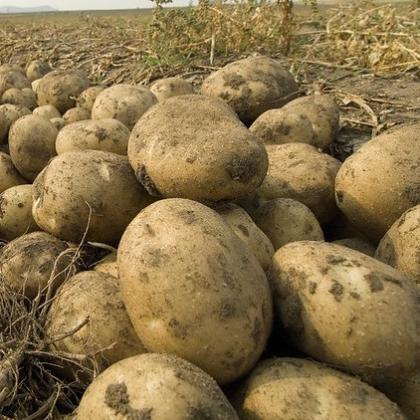 |
Researchers receive $2M to look for new ways to prevent organic potatoes from spoiling |
CORVALLIS, Ore. – Oregon State University researchers have been awarded $2 million from the U.S. Department of Agriculture to develop improved ways of preventing stored potatoes from sprouting, particularly in the organic sector. |
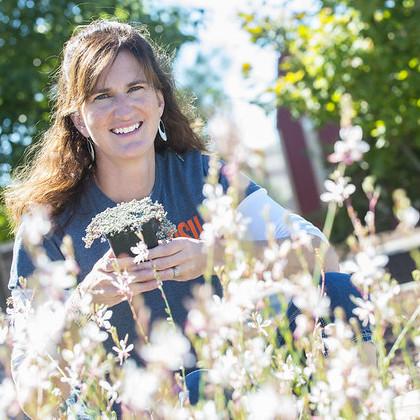 |
New plant hardiness map, used by gardeners nationwide and based on OSU climate data, unveiled |
CORVALLIS, Ore. – The U.S. Department of Agriculture today released its new Plant Hardiness Zone Map, the national standard by which gardeners can determine which plants are most likely to survive the coldest winter temperatures at a certain location. |
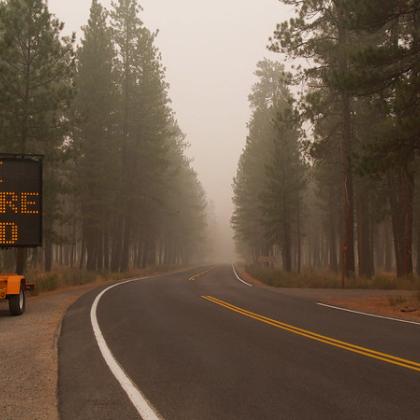 |
Wildfire, drought cause $11.2 billion in damage to private timberland in three Pacific states, study finds |
Wildfires and drought have led to $11.2 billion in damages to privately held timberland in California, Oregon and Washington over the past two decades, a new Oregon State University study found. |
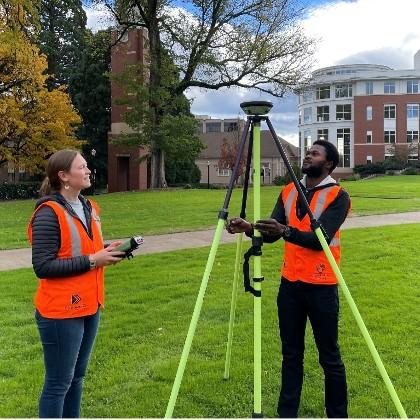 |
Oregon State to receive $6.5M for federal effort to modernize geospatial coordinate system |
Oregon State University is one of four institutions selected to advance a federal effort to modernize the National Spatial Reference System, which underpins surveying, mapping, autonomous vehicle navigation, precision agriculture and the rest of the United States’ geospatial economy. |
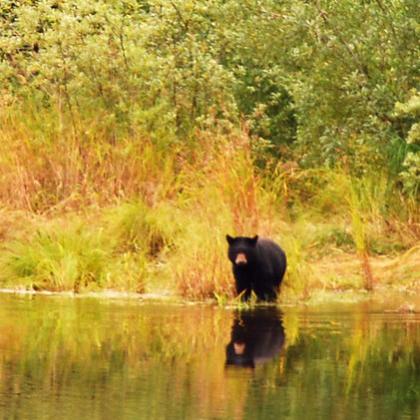 |
Southern Alaska’s national forests key to meeting climate, conservation goals, OSU study shows |
CORVALLIS, Ore. – Analyses of U.S. national forests led by Oregon State University scientists shows that increased protections for two Alaskan forests is a key to meeting climate and biodiversity goals. |
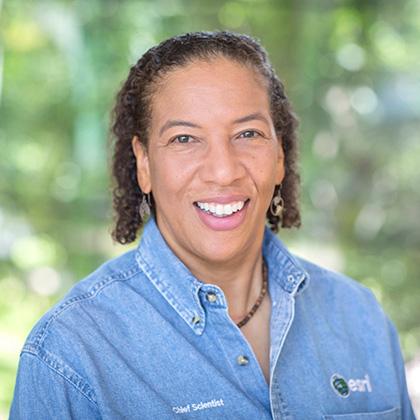 |
Scientist Dawn Wright to discuss her dive to the deepest spot on the planet during Nov. 15 lecture at OSU |
Geographer and oceanographer Dawn Wright, who in 2022 became the first Black person to dive to the deepest known point on the planet, will give the fall 2023 Marston lecture Nov. 15 at Oregon State University. |
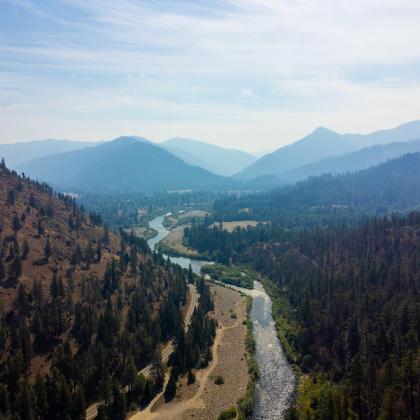 |
Dam removals, restoration project on Klamath River expected to help salmon, researchers conclude |
The world’s largest dam removal and restoration project currently underway on the Klamath River in Oregon and California will aid salmon populations that have been devastated by disease and other factors. However, it will not fully alleviate challenges faced by the species, a team of researchers conclude in a just-published paper. |
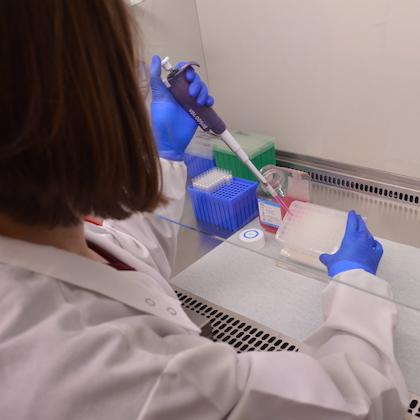 |
OSU veterinary researchers to test hundreds of wild animal species for SARS-CoV-2 |
Backed by a new cooperative agreement from the U.S. Department of Agriculture’s Animal and Plant Health Inspection Service, researchers at Oregon State University will soon begin testing approximately 1,600 wild animal specimens for the presence of SARS-CoV-2, the virus responsible for COVID-19. |
 |
Oregon State researchers uncover mechanism for treating dangerous liver condition |
CORVALLIS, Ore. – A study spearheaded by Oregon State University has shown why certain polyunsaturated fatty acids work to combat a dangerous liver condition, opening a new avenue of drug research for a disease that currently has no FDA-approved medications. |
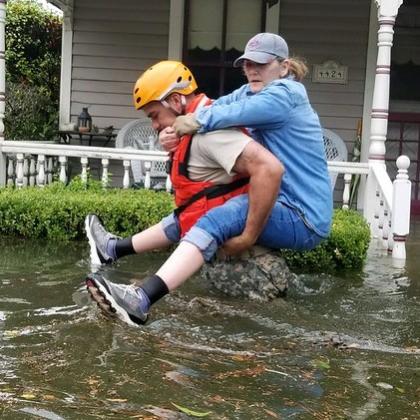 |
Climate report: ‘Uncharted territory’ imperils life on Earth |
CORVALLIS, Ore. – An international coalition of climate scientists says in a paper published today that the Earth’s vital signs have worsened beyond anything humans have yet seen, to the point that life on the planet is imperiled. |
 |
Pacific Northwest’s semiconductor and sustainable timber industries to be strengthened by two Oregon State-led federally designated Tech Hubs |
Oregon State University is the leader of two federally designated Tech Hubs – one focused on microfluidic technology for semiconductors and the other on mass timber design and manufacturing – announced today by the White House. |
 |
College students in minoritized groups feel less confident about peer support in event of sexual assault, study finds |
College students who identify as part of minoritized groups have more negative perceptions about how their peers might react if they were to disclose experiences of sexual violence, a recent Oregon State University study found. |
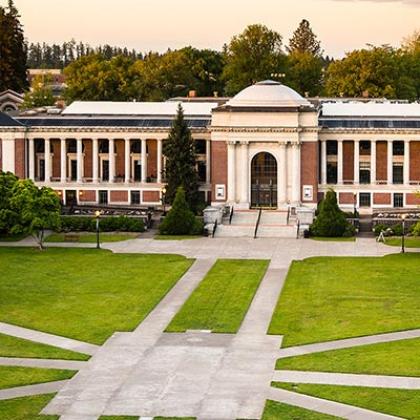 |
Oregon State Board of Trustees approve strategic plan and president’s goals |
The Oregon State University Board of Trustees on Friday accepted a university strategic plan that will guide Oregon State through 2030, and in which OSU seeks to increase research activity, improve graduation rates and increase enrollment online and at OSU-Cascades in Bend. |
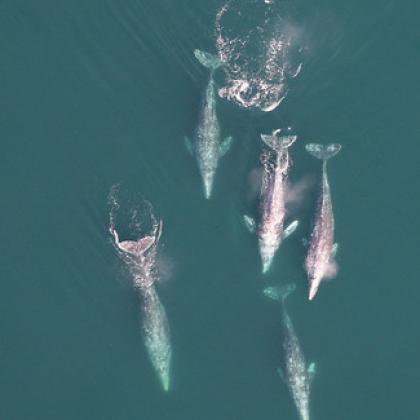 |
Gray whales experience major population swings as a result of Arctic conditions, research shows |
Dynamic and changing Arctic Ocean conditions likely caused three major mortality events in the eastern North Pacific gray whale population since the 1980s, a new study has found. |
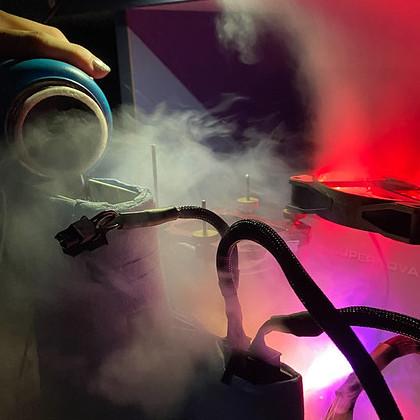 |
Oregon State to lead $2M federal push toward more-efficient, longer-lasting electrical components |
CORVALLIS, Ore. – Researchers in the Oregon State University College of Engineering are spearheading a $2 million federal effort to explore new ways of developing electrical components that are better able to withstand extreme operating conditions, especially high temperatures. |
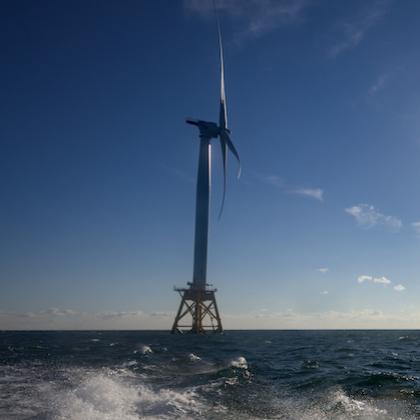 |
OSU-led project receives $2.5 million to study community perceptions of offshore wind energy |
The U.S. Department of Energy has selected a team of researchers led by Oregon State University to receive up to $2.5 million to study what coastal communities think of potential offshore wind energy development and the benefits they could gain from those projects. |
 |
New type of tiny wasp comes with mysterious, cloud-like structures at ends of antennae |
CORVALLIS, Ore. – Fossil researchers have discovered a novel genus and species of tiny wasp with a mysterious, bulbous structure at the end of each antenna. |
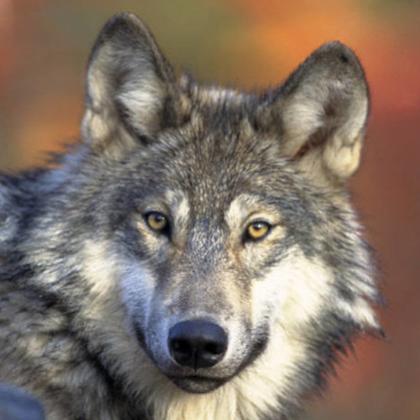 |
Gut bacteria found in wild wolves may be key to improving domestic dogs’ health |
BEND, Ore. – Gut microbes found in wild wolves may be the key to alleviating a debilitating gastrointestinal condition common to domestic dogs, according to a study led by researchers at Oregon State University – Cascades. |
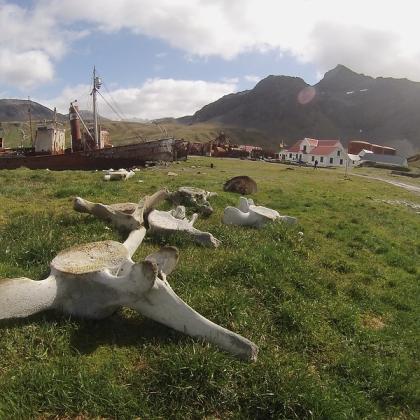 |
DNA from discarded whale bones suggests loss of genetic diversity due to commercial whaling |
Commercial whaling in the 20th century decimated populations of large whales but also appears to have had a lasting impact on the genetic diversity of today’s surviving whales, new research from Oregon State University shows. |
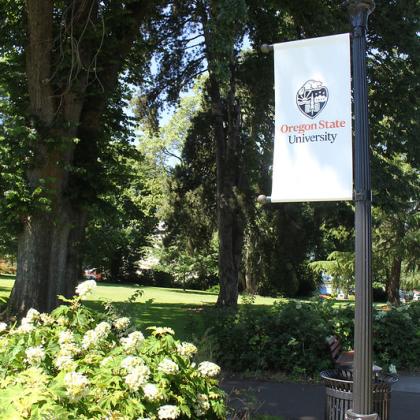 |
OSU researchers receive NSF grant to develop robot swarm that can explore under ice shelves |
Oregon State University researchers will lead a team of scientists and engineers on a three-year, $1.5 million project to develop and test a team of robots that could travel under ice shelves and collect critical measurements about the extent of ice cavities and surrounding ocean properties. |
 |
Is Instagram making the great outdoors more crowded? Not as much as you might suspect |
CORVALLIS, Ore. – Except for modest visitor increases at a small percentage of iconic places, Instagram content is not resulting in more tourist traffic on public lands, according to a study by researchers at Oregon State University. |
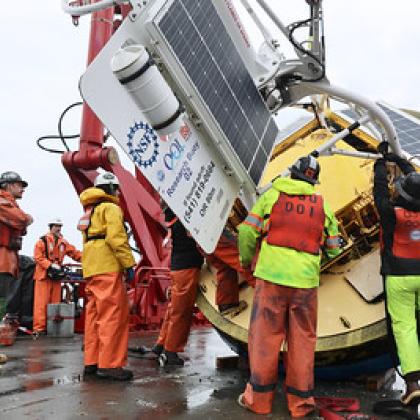 |
Consortium receives National Science Foundation funds to continue initiative that monitors ocean conditions in real time |
The U.S. National Science Foundation has awarded a coalition of academic and oceanographic research organizations including Oregon State University a five-year, $220 million cooperative agreement to continue operating and maintaining the Ocean Observatories Initiative. |
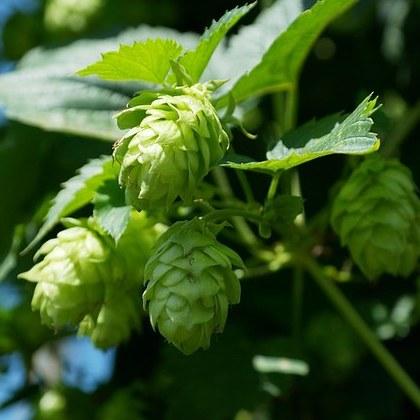 |
Compound derived from hops reduces abundance of gut microbe associated with metabolic syndrome |
CORVALLIS, Ore. – Researchers have shown in a mouse model and lab cultures that a compound derived from hops reduces the abundance of a gut bacterium associated with metabolic syndrome. |
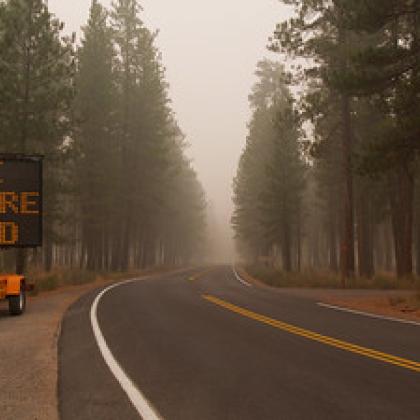 |
Socially vulnerable populations are disproportionately exposed to wildfires in the West, study finds |
People experiencing a high degree of social vulnerability are also more exposed to wildfires in Oregon and Washington as wildfire risk increases, a new study shows. |
 |
Court action is necessary to establish climate stability as a protected right to break climate change impasse, Oregon State professor concludes |
New court actions upholding climate stability as a protected right are needed to break the climate change impasse, an Oregon State University economist concludes in a just-published paper. |
 |
Oregon State researchers receive grants to study marine carbon dioxide removal solutions |
Oregon State University researchers are receiving federal funding to study potential solutions for removing carbon dioxide in marine environments. |
 |
Oregon State receives $7.5 million grant to build state of the art zebrafish biomedical research facility |
Oregon State University has received a $7.5 million National Institutes of Health grant to modernize a lab focused on using zebrafish to address pressing human health challenges |
 |
Art, science merge in Oregon State study of 19th-century landscape paintings’ ecological integrity |
CORVALLIS, Ore. – An Oregon State University-led collaboration of ecologists and art historians has demonstrated that landscape paintings from more than 150 years ago can advance environmental science. |
 |
New multi-institution earthquake center aims to advance understanding of Cascadia Subduction Zone |
Oregon State University researchers will play key roles in a new multi-institution earthquake research center dedicated to the study of the Pacific Northwest’s Cascadia Subduction Zone, which is capable of producing earthquakes comparable to the largest recorded globally. |
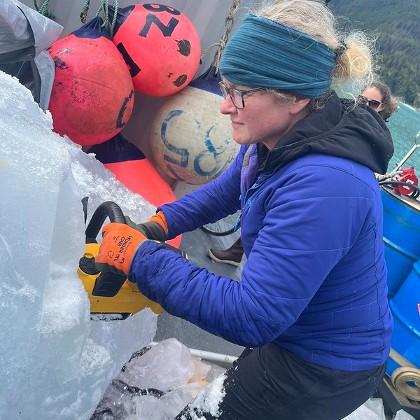 |
Bursting air bubbles may play a key role in how glacier ice melts, Oregon State research suggests |
CORVALLIS, Ore. – Oregon State University research has uncovered a possible clue as to why glaciers that terminate at the sea are retreating at unprecedented rates: the bursting of tiny, pressurized bubbles in underwater ice. |
 |
Efforts to restore federal forests in eastern Oregon are working, Oregon State research shows |
CORVALLIS, Ore. – Forest thinning is improving the robustness of older trees and enhancing native biodiversity on federal lands in eastern Oregon, evidence that collaborative efforts to restore forests are working, research by Oregon State University shows. |
 |
Oregon State University sets record with research awards totaling $480 million |
CORVALLIS, Ore. – Bolstered by a big jump in funding from U.S. government agencies, Oregon State University’s research awards in the last fiscal year surged to $480 million, a university record. |
 |
Broken by bison, aspen saplings having a tough time in northern Yellowstone |
CORVALLIS, Ore. – In northern Yellowstone National Park, saplings of quaking aspen, an ecologically important tree in the American West, are being broken by a historically large bison herd, affecting the comeback of aspen from decades of over-browsing by elk. |
 |
FDA approving drugs after fewer trials, providing less information to public, OSU studies find |
The U.S. Food and Drug Administration is approving more novel pharmaceutical drugs based on single clinical trials and with less public disclosure about those trials than was the norm just a few years ago, a pair of new studies from Oregon State University found. |
 |
Oregon State researchers develop novel technique for sniffing out toxic algae blooms |
CORVALLIS, Ore. – Researchers at Oregon State University have developed a new way to monitor the danger associated with algae blooms: “sniffing” the water for gases associated with toxins. |
 |
‘Exploding Whales’ partnership with Eugene baseball team benefits OSU’s Marine Mammal Institute |
A minor-league baseball promotion rooted in a quirky bit of Oregon history will culminate this weekend in Eugene with a fundraising auction to benefit Oregon State University’s Marine Mammal Institute. |
 |
New species of beetle used extra-long antennae to battle for mates at the feet of dinosaurs |
CORVALLIS, Ore. – One hundred million years ago, as iguanodons and triceratops fled from hungry tyrannosaurs, another biological drama played out on the ground where the giant reptiles trod: Male beetles using their supersized antennae in combat for mates. |
 |
Gray whales feeding along the Pacific Northwest coast are smaller than their counterparts who travel farther to forage |
Gray whales that spend their summers feeding off the coast of Oregon are shorter than their counterparts who travel north to the Arctic for food, new research from Oregon State University’s Marine Mammal Institute shows. |
 |
In states that legalized cannabis, frequent cannabis use became more common in young adults who are not in college, OSU study finds |
An Oregon State University study found that in states where recreational cannabis has been legalized, young adults not in college more often became frequent users of the drug than their college-enrolled peers. |
 |
Visible work on OSU-led wave energy testing facility to begin in August |
The next step in Oregon State University’s construction of a wave energy testing facility off the Oregon Coast is likely to be visible to residents and visitors to the area in August. |
 |
Billions in conservation spending fail to improve wild fish stocks in Columbia Basin |
CORVALLIS, Ore. – Four decades of conservation spending totaling more than $9 billion in inflation-adjusted tax dollars has failed to improve stocks of wild salmon and steelhead in the Columbia River Basin, according to Oregon State University research. |
 |
Scientists develop tool to predict dam removal costs by analyzing 55 years of past removals |
Scientists analyzed more than 650 dam removal projects over 55 years in the United States totaling $1.52 billion inflation-adjusted dollars to develop a tool to better estimate the cost of future dam removals. |
 |
New drug delivery system shows promise in treatment of life-threatening pregnancy condition |
PORTLAND, Ore. – Researchers in the Oregon State University College of Pharmacy have developed a drug delivery system that shows promise for greatly enhancing the efficacy of the medicine given to women with the life-threatening condition of ectopic pregnancy, which occurs when a fertilized egg implants somewhere other than the lining of the uterus. |
 |
Oregon State researchers developing technology to make wastewater usable for irrigation |
CORVALLIS, Ore. – Researchers in the Oregon State University College of Engineering are developing technology to convert wastewater into a product that would simultaneously irrigate and fertilize crops. |
 |
National Science Foundation awards $4.6 million to OSU Marine and Geology Repository |
Oregon State University has been awarded $4.6 million in grants from the National Science Foundation to continue operating the Marine and Geology Repository, one of the nation's largest repositories of oceanic sediment cores, for the next five years. |
 |
Warmer ocean temperatures increase risk of salmon bycatch in Pacific hake fishery |
Rates of Chinook salmon bycatch in the Pacific hake fishery rise during years when ocean temperatures are warmer, a signal that climate change and increased frequency of marine heatwaves could lead to higher bycatch rates, new research indicates. |
 |
Personal experience with wildfire increases engagement in disaster preparedness, OSU study finds |
Residents who experienced direct harm from Oregon’s 2020 wildfires are more likely to take steps to mitigate their fire risk in the future, an Oregon State University study found. |
 |
Oregon State scientists find a better way to capture carbon from industrial emissions |
Researchers in the Oregon State University College of Science have demonstrated the potential of an inexpensive nanomaterial to scrub carbon dioxide from industrial emissions. |
 |
Astrophysics collaboration led by Oregon State finds 'chorus' of gravitational waves |
CORVALLIS, Ore. – Gravitational waves, ripples in the fabric of time-space predicted by Albert Einstein more than a century ago, are permeating the universe at low frequencies, according to a multiyear National Science Foundation project led by Oregon State University scientists. |
 |
OSU study: People with facial differences fare best when they disclose conditions on own terms |
People with noticeable facial differences often feel compelled to explain the medical reasons behind those differences, but such involuntary disclosure may increase stigma, anxiety and depression, recent research from Oregon State University has found. |
 |
Oregon State a founding member of multi-university effort to grow semiconductor workforce |
Oregon State University has become a founding member of a university-industry collective tasked with developing the United States’ next generation of semiconductor workers. |
 |
Oregon State’s collaborative innovation project receives $72 million from Oregon Legislature |
Oregon State University is on track to break ground in December on the $213 million Jen-Hsun and Lori Huang Collaborative Innovation Complex, following final legislative approval Sunday of $72 million in state bonding from an Oregon Legislature eager to enlarge the state’s semiconductor footprint. |
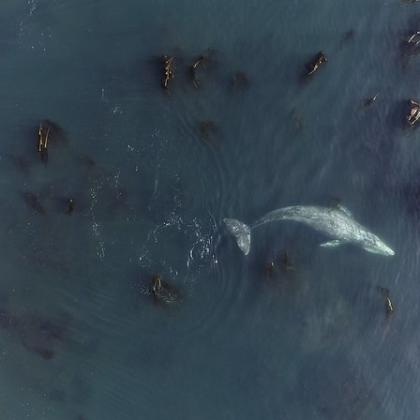 |
Poop and prey help researchers estimate that gray whales off Oregon Coast consume millions of microparticles per day |
Oregon State University researchers estimate that gray whales feeding off the Oregon Coast consume up to 21 million microparticles per day, a finding informed in part by poop from the whales. |
 |
Oregon State University researchers working on process for upcycling waste PVC into adhesive |
CORVALLIS, Ore. – Researchers in the Oregon State University College of Engineering are developing a process for safely converting waste polyvinyl chloride, commonly referred to as PVC, into a wax that can be used as an adhesive for flooring and other products. |
 |
Massive underwater plateau near Solomon Islands is younger and its eruption was more protracted than previously thought, research suggests |
The Ontong Java Plateau, a volcanically-formed underwater plateau located in the Pacific Ocean north of the Solomon Islands, is younger and its eruption was more protracted than previously thought, new research led by Oregon State University suggests. |
 |
Dietary supplementation shown to improve nutrition biomarkers in study of older men |
CORVALLIS, Ore. – A six-month study of healthy older men demonstrated that daily multivitamin/multimineral supplementation had a positive effect on key nutrition biomarkers. |
 |
Newly planted vegetation accelerates dune erosion during extreme storms, research shows |
CORVALLIS, Ore. – Newly planted vegetation on coastal sand dunes can accelerate erosion from extreme waves, a study involving researchers from the Oregon State University College of Engineering suggests. |
 |
U.S. consumers judge morality of armed self-protection on case-by-case basis, OSU research shows |
American consumers use their understanding of gun rights when judging the morality of civilians’ use of guns to protect themselves from crime, and that assessment varies depending on specific scenarios, new research from Oregon State University shows. |
 |
OSU receives grant to study links between changing ocean conditions, movement of fish and geopolitical tensions |
An Oregon State University researcher has been awarded a three-year, $1.4 million grant from the U.S. Department of Defense to lead a study about the movement of fish stocks due to changing climate conditions and the potential geopolitical tensions that could result from that shift. |
 |
Viruses hidden in coral symbiont’s genetic material are a potential threat to reefs |
CORVALLIS, Ore. – Microscopic algae that corals need for survival harbor a common and possibly disease-causing virus in their genetic material, an international collaboration spearheaded by an Oregon State University researcher has found. |
 |
Oregon State Board of Trustees approves budget, construction of research complex |
The Oregon State University Board of Trustees on Friday approved a $1.64 billion budget to support university operations for the 2023-24 fiscal year and advanced to the construction phase a research complex in Corvallis and a housing project in Newport to serve the university’s Hatfield Marine Science Center. |
 |
Forest birds with short, round wings more sensitive to habitat fragmentation, OSU study shows |
CORVALLIS, Ore. – Tropical forest birds, which tend to have wings that are short and round relative to their body length and shape, are more sensitive to habitat fragmentation than the long-, slender-winged species common in temperate forests, according to an international collaboration that included scientists from Oregon State University. |